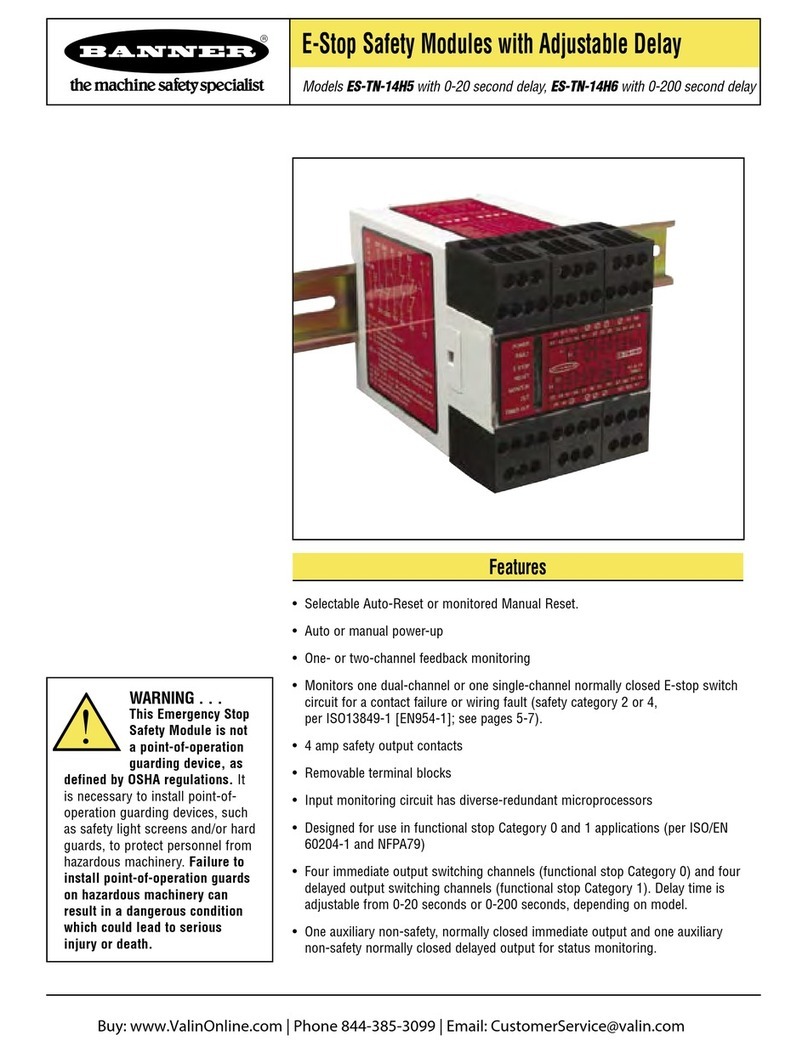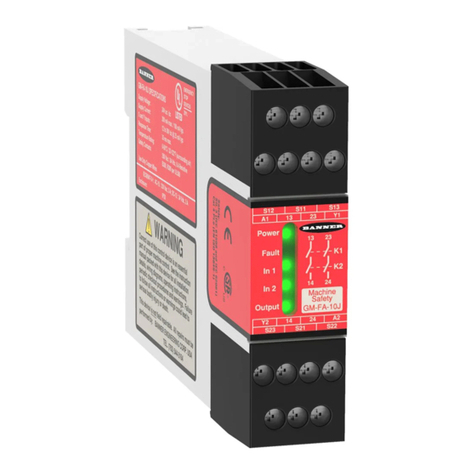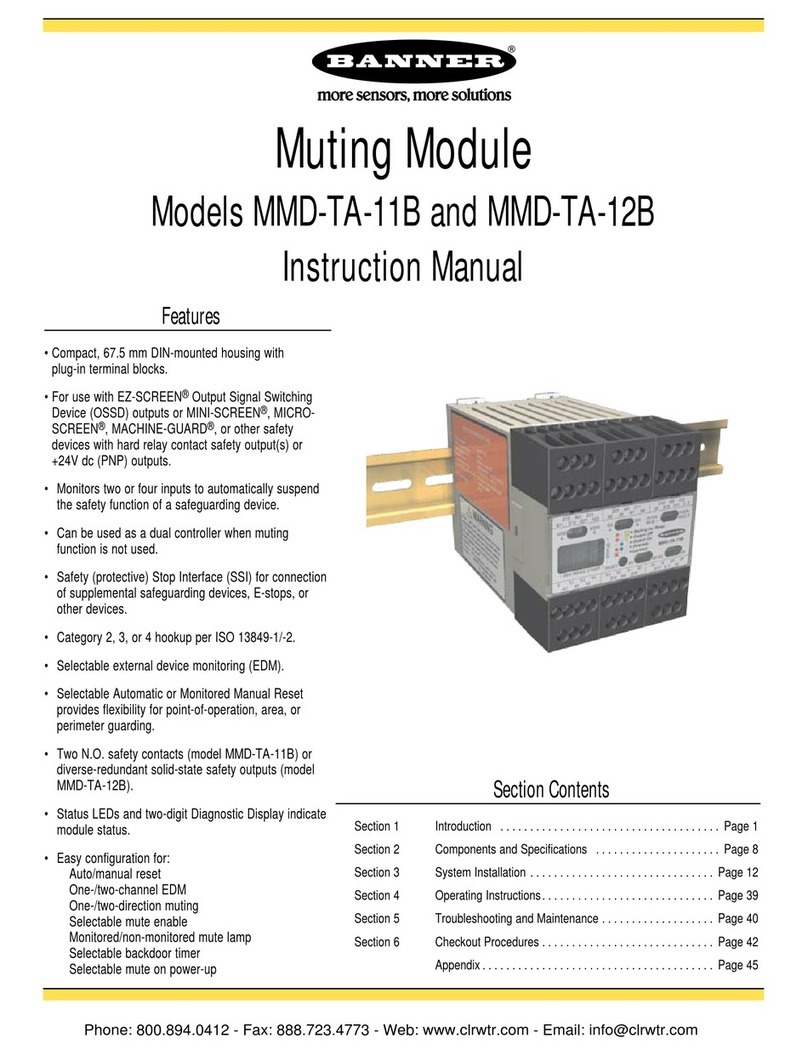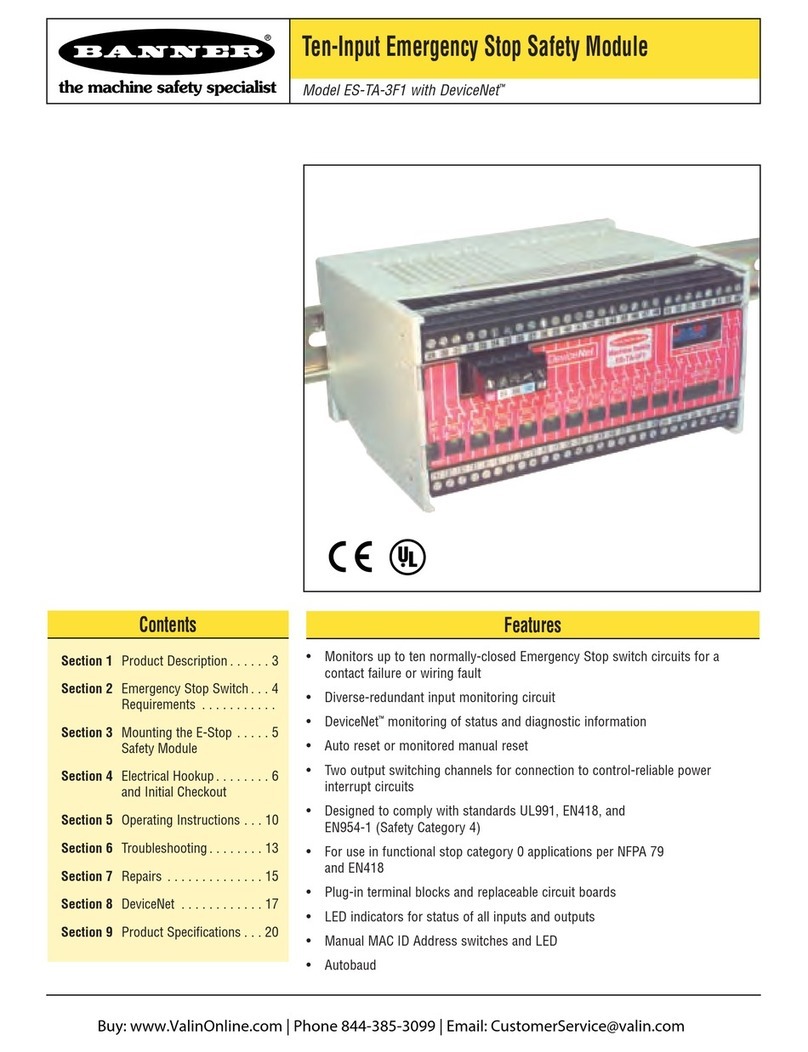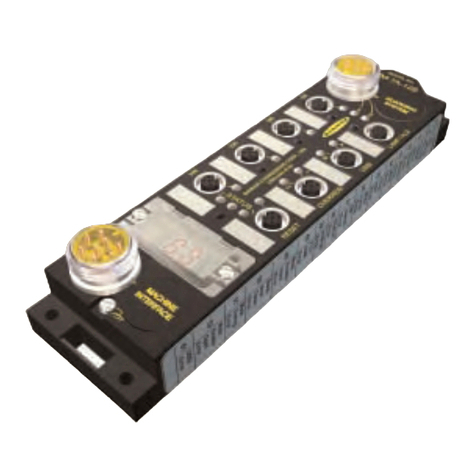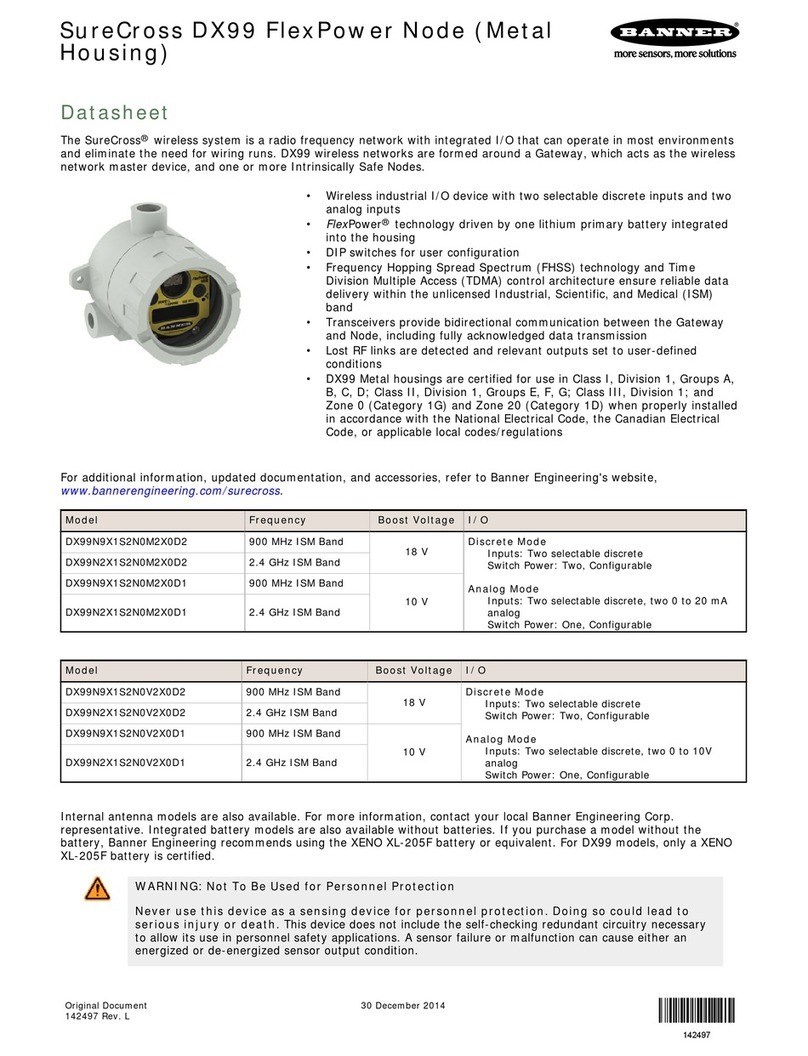
E-Stop Safety Module – Models ES-UA-5A and ES-VA-5A
External Device Monitoring
To satisfy the requirements of Safety Category 4 of EN 954-1, the Master Stop Control
Elements must each offer a normally closed, forced-guided monitor contact. One
normally closed monitor contact from each Master Stop Control Element is wired in
series to the S31-32 feedback input (see Figures 4 and 5). In operation, if one of the
switching contacts of either master stop control element fails in the shorted condition, the
associated monitor contact will remain open. Therefore, it will not be possible to reset
the E-Stop Safety Module. If no MSC-monitor contacts are monitored, a jumper must be
installed between terminals S31 and S32 (see Figures 4 and 5). It is the responsibility
of the user to ensure that any single failure will not result in a hazardous condition
and will prevent a successive machine cycle.
Connection to the Machine to be Controlled
The hookup diagrams (Figures 4 and 5) show a generic connection of the E-Stop Safety
Module’s four redundant output circuits to Master Stop Control Elements MSC1 through
MSC4. A Master Stop Control Element is defined as an electrically powered device,
external to the E-Stop Safety Module, which stops the machinery being controlled by
immediately removing electrical power to the machine and (when necessary) by applying
braking to dangerous motion. This stopping action is accomplished by removing power to
the actuator of either Master Stop Control Element.
Connection of Reset Switch
The Reset Circuit switch can be any mechanical switch such as a normally open
momentary switch, or a two-position key switch. The Reset switch must be capable of
reliably switching 12 to 18V dc at 40 to 100 milliamps. As shown in Figures 4 and 5, the
Reset switch connects between terminals S33 and S34 of the Safety Module.
The Reset switch must be located outside of – and not be accessible from – the
area of dangerous motion, and must be positioned so that any area of dangerous
motion may be observed by the switch operator during the Reset procedure.
To perform a manual reset, close the normally open switch for at least 1/4 second, but no
longer than 2 seconds, and then re-open the switch.
Automatic Reset Mode
Model ES-UA-5A or ES-VA-5A may be used also with automatic reset. If no MSC-monitor
contacts are monitored, a jumper must be installed between terminals S31 and S32 (see
Figures 4 and 5). The E-Stop Safety Module will reset (and the outputs energize) as soon
as the E-stop switch returns to its closed-contact position.
The automatic reset mode is useful for some automated processes. However, if
automatic reset is used, it is necessary to provide an alternate means of preventing
resumption of hazardous machine motion, until an alternate reset procedure is
performed. The alternate procedure must include a Reset/Restart switch, located outside
the area of dangerous motion, which is positioned so that any area of dangerous motion
may be observed by the switch operator during the reset procedure.
Auxiliary Monitor Contact/Solid-State Monitor Outputs Connection
The action of the auxiliary monitor contact, terminals 51/52, inversely “follows” the action
of the safety outputs. The 51/52 auxiliary monitor contact is to be used only for control
functions that are NOT safety-related.
There are two solid-state monitor outputs, each capable of switching up to 100 mA at
12-24V dc. One output at terminal Y32 follows the action of the output circuits (K1 and
K2); the other output at terminal Y35 opens (low signal) when there is an internal power
supply fault. A typical use is to communicate the status of the Safety Module output to a
programmable logic controller (PLC). See Figure 4 for hookup information.
WARNING . . .
Reset
Routine Required
U.S. and international
standards require that a reset routine
be performed after returning the E-stop
switch to its closed-contact position
(when arming the E-stop switch). When
automatic reset is used, an alternate
means must be established to require a
reset routine, after the E-stop switch is
armed. Allowing the machine to restart
as soon as the E-stop switch is armed
creates an unsafe condition which
could result in serious injury or death.
WARNING . . .
Reset Switch Location
Any Reset switch(es) used
must be accessible only from outside,
and in full view of, the hazardous area.
Reset switches must also be out of
reach from within the safeguarded
space, and must be protected against
unauthorized or inadvertent operation
(e.g., through the use of rings or guards).
If any areas are not visible from the
Reset switch(es), additional means of
safeguarding must be provided.
